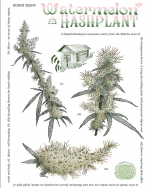F2F
Well-known member
Haha, indeed! It’s long flowering for sure. and clear and up. My cross has NMK and A5 in it and it is still so clean it’s awesome. (bred to VB 2X).If it runs for 120 days flower it might be in my ball park
I have a pack of repros from snow, supposed to have another two packs coming but, another story.
Peace
F2F






















